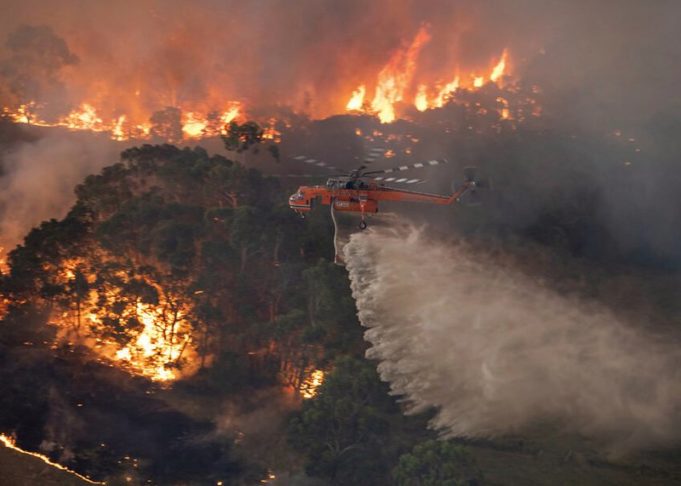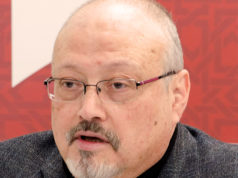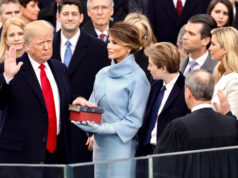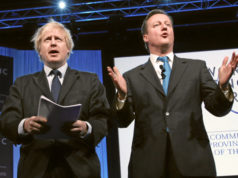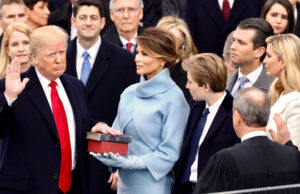Flickr / CC-BY-SA-3.0 / GFDL
1 – Australia & Amazon Wildfires
The Amazonian tropical dry season of 2019 saw a significant surge in the number of wildfires in the Amazon rainforest, primarily in Brazil.
Fires normally occur around the dry season as slash-and-burn methods are used to clear the forest to make way for agriculture, logging, and mining, leading to deforestation of the Amazon rainforest. Much of this activity is illegal.
The increased rates of fires led to international concern about the fate of the Amazon rainforest, the world’s largest carbon dioxide sink, playing a huge role in climate change.
The increased rates were first reported by Brazil’s National Institute for Space Research (INPE) in June 2019 through their satellite monitoring systems.
International attention was drawn to the situation when NASA corroborated the findings, with smoke from the fires visible from satellite imagery. The smoke also darkened the city of São Paulo despite being thousands of kilometers from the Amazon.
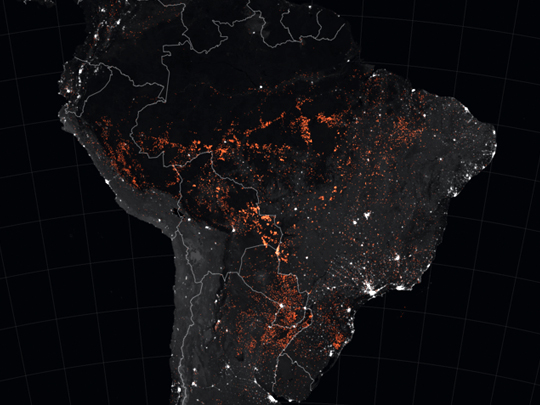
On 29 August, INPE reported more than 80,000 fires across all of Brazil, a 77% year-to-year increase. Similar year-to-year increases were also reported in Bolivia, Paraguay, and Peru, with the fire counts of over 19,000, 11,000 and 6,700, respectively.
It is estimated over 900 thousand hectares of rainforest have been lost to fires in 2019.
In addition to the impact on the global climate, the fires created environmental concerns from the excess carbon dioxide and carbon monoxide, potential impacts on the biodiversity of the Amazon, and threats to indigenous tribes that live within the forest.
The increased rate of fires in Brazil has raised the most concerns as international leaders, with the blame largely attributed to Brazilian president Jair Bolsonaro’s pro-business policies that have weakened environmental protections and encouraging deforestation.
Following increased pressure from the international community, Bolsonaro eventually dispatched over 44,000 Brazilian troops and allocated funds to fight the fires, later signing a decree to prevent such fires for a sixty-day period.
Meanwhile, huge bushfires in Australia saw millions of hectares of land destroyed, with much of the land being the habitat for the koala bear.
In total, up to as many as one billion animals were tragically killed, with some endangered species potentially driven to extinction.
The fires burnt an estimated 18.6 million hectares, destroyed up to 6,000 buildings and killed at least 34 people. Large parts of the National Parks in New South Wales were also burned.
2 – The Mueller Report
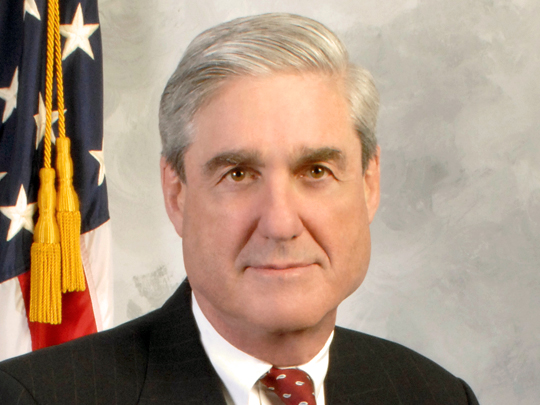
The Mueller Report is the official report documenting the findings and conclusions of Special Counsel Robert Mueller’s investigation into Russian efforts to interfere in the 2016 United States presidential election.
It also investigated allegations of conspiracy or coordination between Donald Trump’s presidential campaign and Russia, and allegations of obstruction of justice.
The report was submitted to Attorney General William Barr on 22 March 2019, with a redacted version of the 448-page report released to the public on 18 April.
Volume I of the report concludes that the investigation did not find sufficient evidence that the campaign coordinated or conspired with the Russian government.
Investigators were unable to achieve a clear picture of what happened due to encrypted or deleted communications, as well as false or declined testimony.
However, the report stated there was sweeping and systemic Russian interference in the 2016 presidential election, which was welcomed by the Trump campaign as it expected to benefit from these efforts.
The report also identified links between Trump campaign officials and individuals with ties to the Russian government, about which several people connected to the campaign made false statements and obstructed investigations.
Volume II of the report addresses the obstruction of justice. The investigations approach meant it could not result in a judgment that Trump committed a crime, abiding by an Office of Legal Counsel opinion that a sitting president cannot stand trial.
Investigators feared charges would preempt impeachment and felt it would be unfair to accuse Trump of a crime without charges or a trial. The report states it “does not conclude that the President committed a crime”, but, “it also does not exonerate him”.
The report details ten instances where Trump could have obstructed justice while president and one prior to his election. It also states that Congress can decide whether Trump obstructed justice and take action accordingly.
On 24 March, Attorney General Barr sent Congress a four-page letter detailing the report’s conclusions.
Three days later, Mueller privately wrote to Barr, stating Barr’s letter “did not fully capture the context, nature, and substance of this office’s work and conclusions”, which led to “public confusion”.
Barr declined Mueller’s request to release the report’s introduction and executive summaries ahead of the full report.
Barr’s letter stated that he and Deputy Attorney General Rod Rosenstein concluded the evidence was “not sufficient to establish” that Trump had obstructed justice.
In July 2019, Mueller testified to Congress that a president could be charged with crimes including obstruction of justice after they have left the office.
3 – Global Climate Strikes
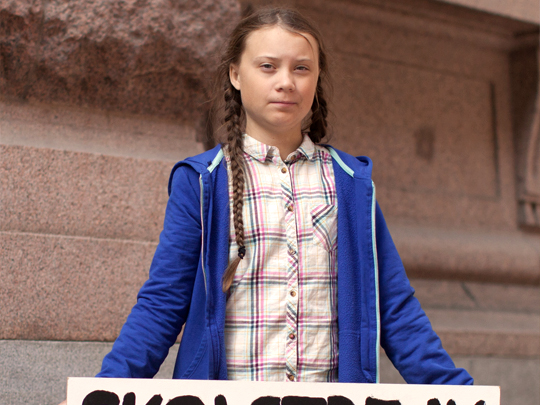
On 20 September 2019, a series of international climate strikes and protests took place, led by young people and adults demanding action to address climate change.
The strikes occurred three days before the United Nations Climate Summit.
The protests are taking place across 4,500 locations in 150 countries. The event is a part of the school strike for the climate movement, inspired by Swedish climate activist Greta Thunberg.
It is estimated to have been the largest climate protest in world history. The strike was the third in Thunberg’s “school strike for climate” movement.
The first strike in March 2019 had 1.6 million participants from over 125 countries. The second in May 2019 was timed to coincide with the 2019 European Parliament election, consisting of over 1,600 events in 125 countries.
On 27 September, the second wave of protests took place on 27 September, in which an estimated 2 million people took part in over 2,400 protests around the world.
4 – Venezuela Crisis
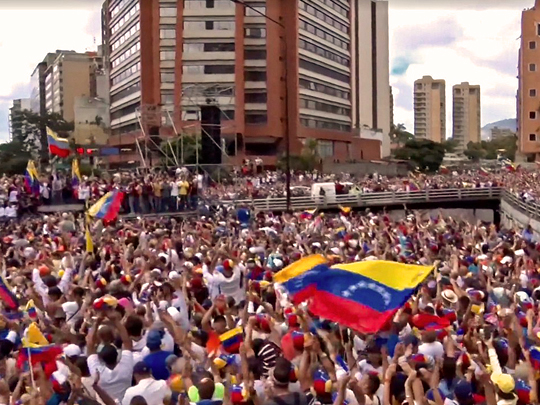
In January 2019, a crisis started concerning who the legitimate President of Venezuela was, with the nation divided in support for Nicolás Maduro and Juan Guaidó.
With the results of the 2018 presidential election widely disputed, the opposition-majority National Assembly announced a plan to make Juan Guaidó the acting President, under Article 233 of the Venezuelan Constitution.
Shortly after this action, the pro-Maduro Supreme Tribunal of Justice declared that the National Assembly was unconstitutional.
Beginning in March, nationwide electrical blackouts in Venezuela started to recur. Experts attribute the electricity shortages to a lack of maintenance and a lack of technical expertise as a result of a brain drain from the country.
In April, amid increasing announcements from the United Nations about the scale of the humanitarian crisis, the Red Cross tripled its budget for aid to Venezuela, with the first delivery of supplies for hospitals arriving on 16 April.
On 30 April, a group of military personnel and civilians joined Juan Guaidó in his call for an uprising against Nicolás Maduro, during which opposition leader Leopoldo López was freed from house arrest after five years of imprisonment.
Manuel Cristopher Figuera, the head of the Bolivarian Intelligence Service, denounced the Maduro government, before being dismissed and going into hiding. A number of military members were also expelled for backing Guaidó.
Guaidó acknowledged the uprising had failed, saying he had failed to receive sufficient military backing but stated protests would be held every day until Maduro stepped down.
The Venezuelan Observatory of Social Conflict stated there were a total of 6,211 during the first three months of 2019, averaging 69 protests per day.
In June, Guaidó was recognized as the acting President of Venezuela by 54 countries, such as the US, Canada, and most of Western Europe. Meanwhile, China, Cuba, Iran, Russia, Syria, and Turkey remained supportive of Maduro.
However, following the failed uprising on 30 April, support for Guaidó declined, attendance to his demonstrations subsided and many analysts began to predict Maduro would maintain his hold on power.
5 – Hong Kong Protests
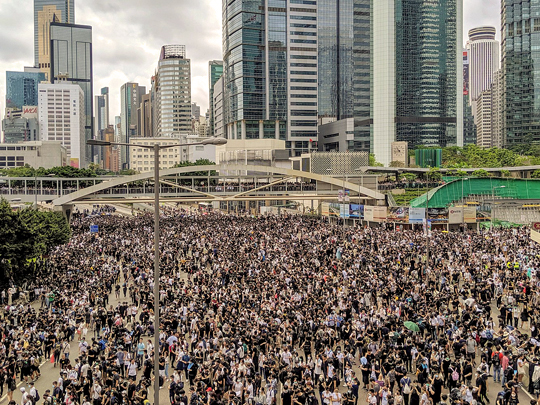
The Hong Kong protests are a series of demonstrations that began in opposition to the introduction of the Fugitive Offenders amendment bill proposed by the Hong Kong government.
If enacted, the bill would allow local authorities to detain and extradite fugitives who are wanted in mainland China and Taiwan, with whom Hong Kong does not currently have extradition agreements.
People were concerned that the bill would subject Hong Kong citizens to the mainland Chinese jurisdiction and undermine the region’s autonomy. This led to pro-democracy groups launching a protest march against the bill on 31 March.
Demonstrations against the bill turned into consecutive mass movements in June when hundreds of thousands of people marched against the bill. Protests on 12 June, the day on which the bill was scheduled for a second reading in the Legislative Council, saw a sharp escalation in violence.
Riot police deployed tear gas and rubber bullets, but protesters successfully stalled the passage of the bill. Organizers claimed up to two million attended.
On 1 July, the 22nd anniversary of the handover, as hundreds of thousands of people took part in the annual march, a group of demonstrators broke into the Legislative Council Complex and vandalized central government symbols.
Protests continued throughout the summer, escalating into increasingly violent confrontations with the police. Subsequent police operations and misconduct prompted a general strike and city-wide protests on 5 August.
An estimated 1.7 million people attended a rally condemning police brutality on 18 August.
Over 200,000 people created “The Hong Kong Way”, a human chain 50 kilometers long. There were also pro-police rallies that attracted hundreds of thousands of Hong Kong residents to attend.
Hong Kong Chief Executive Carrie Lam suspended the extradition bill on 15 June. However, she refused to concede the protestors’ other demands of an independent inquiry on police brutality, the release of arrested protesters, and her resignation.
On 4 October, Lam implemented an anti-mask law to counterproductive effect, resulting in widespread conflict throughout October. The extradition bill was finally withdrawn on 23 October, but the government still refused to concede to the other demands.
6 – Christchurch Shooting

The Christchurch mosque shootings were two consecutive terrorist shooting attacks at mosques in Christchurch, New Zealand, during Friday Prayer on 15 March 2019. The attacks killed 51 people and injured 49.
The attacks began at the Al Noor Mosque in the suburb of Riccarton at 1:40 p.m. and continued at the Linwood Islamic Centre at about 1:55 p.m. The first attack was live-streamed by the gunman on Facebook Live.
The gunman spent about six minutes in the first mosque, firing indiscriminately at worshippers in the prayer hall from close range, shooting many multiple times. He then returned to his car and fled the scene.
The second mosque was approx. 5 kilometers (3 miles) east of the Al Noor Mosque. He was initially unable to find the main door, so instead shot people outside and through a window.
The gunman was arrested 21 minutes after the first emergency call. Video footage showed his car had been rammed against the curb by a police car before his arrest at gunpoint.
Brenton Tarrant, a 28-year-old Australian, described as a white supremacist and part of the alt-right, was initially charged with one murder.
However, he was later charged with all 51 murders, 40 attempted murders, and engaging in a terrorist act. Tarrant pleaded not guilty to all charges. His trial was expected to take place in June 2020 at the time of writing.
The attacks were linked to a global increase in white supremacism and alt-right extremism. New Zealand Prime Minister Jacinda Ardern described it as “one of New Zealand’s darkest days”.
The attacks were the deadliest mass shootings in modern New Zealand history.
7 – El Paso Shooting
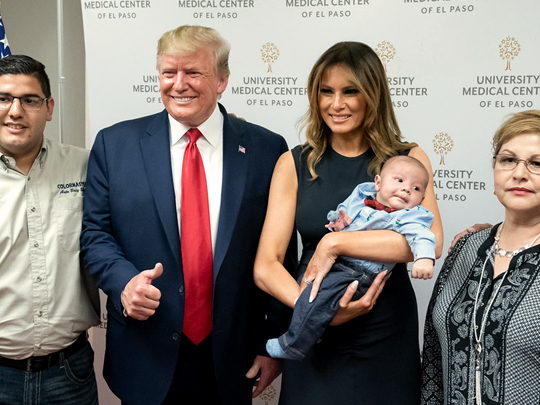
On 3 August 2019, a mass shooting occurred at a Walmart store in El Paso, Texas, United States. The gunman killed 22 people and injured 24 others.
The Federal Bureau of Investigation is investigating the shooting as an act of domestic terrorism and a possible hate crime. 21-year-old Patrick Crusius from near Dallas, Texas was arrested shortly after the shooting and charged with capital murder.
The shooting occurred at a Walmart Supercenter on the east side of El Paso. The gunman walked into the store carrying a WASR-10 rifle, a civilian version of the AK-47 and began shooting just before 10:40 a.m.
The store manager saw Crusius begin firing in the parking lot and issued an active shooter warning to his employees who began helping customers evacuate or hide. Many fled to other stores in the adjacent mall or hid under tables and in shipping containers.
First responders began to arrive within six minutes of the initial 9-1-1 call. Among the dead were thirteen Americans, eight Mexicans, and one German.
Several funeral homes in El Paso and Ciudad Juárez announced they would provide funeral services for free to the families of the victims.
After the shooting, a Walmart employee sent an organization-wide memorandum urging employees to strike to force Walmart to stop selling guns. Walmart issued a statement they would not be altering any form of gun-sale policies within its stores.
However, on 3 September, Walmart announced it will stop selling ammunition for handguns and some assault weapons in all of its American stores. They had also earlier pledged $400,000 aimed at helping the victims of the mass shooting.
Police believe Crusius published a document, described as a white nationalist, anti-immigrant manifesto, on 8chan, an internet messageboard, shortly before the attack. He cited inspiration from the Christchurch mosque shootings in New Zealand.
8 – Notre Dame Cathedral Fire
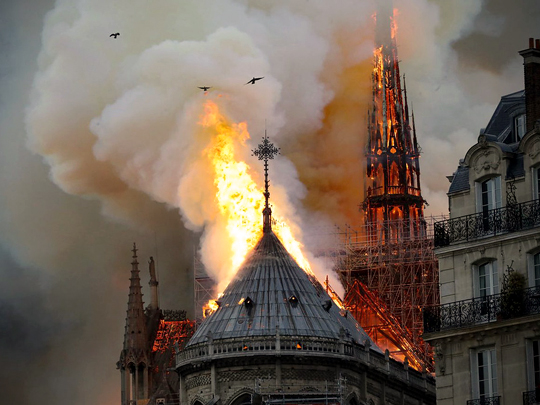
On 15 April 2019, just before 6: 20 pm, a fire broke out beneath the roof of Notre-Dame de Paris cathedral in Paris.
By the time it was extinguished, the building’s spire and most of its roof had been destroyed and its upper walls severely damaged.
Extensive damage to the interior was prevented by its stone vaulted ceiling, which largely contained the burning roof as it collapsed.
Many works of art and religious relics were moved to safety early in the emergency, but others suffered smoke damage, while some exterior art was damaged or destroyed.
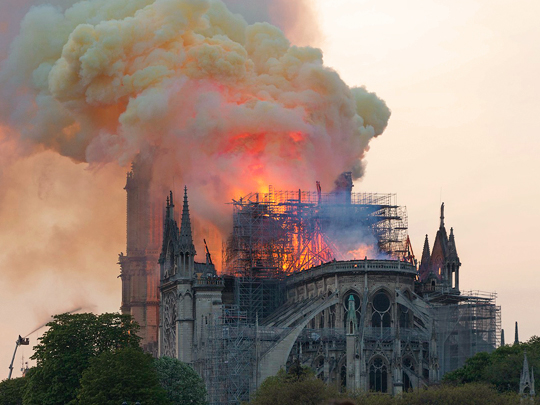
The cathedral’s altar, two pipe organs, and its three iconic 13th-century rose windows, suffered little to no damage. Three emergency workers were injured.
President Emmanuel Macron said that the cathedral would be restored, and launched a fundraising campaign that brought in pledges of over €1 billion within a week.
It is estimated a complete restoration could require up to twenty years.
9 – Ethiopian Airlines Crash

Ethiopian Airlines Flight 302 was an international flight from Addis Ababa, Ethiopia to Nairobi, Kenya on 10 March 2019.
The Boeing 737 MAX 8 aircraft crashed near the town of Bishoftu six minutes after takeoff, killing all 157 people aboard.
Many of the passengers were traveling to Nairobi to attend the fourth session of the United Nations Environment Assembly. 22 people affiliated with the UN were killed, including seven World Food Programme staff, and staff from the office of the United Nations High Commissioner for Refugees.
The Ethiopian parliament declared 11 March as a day of national mourning. During the opening of the United Nations Environment Assembly, a minute of silence was observed in remembrance of the victims.
Flight 302 is the deadliest accident involving an Ethiopian Airlines aircraft to date and also the deadliest aircraft accident to occur in Ethiopia.
The preliminary report shows the pilots initially followed the procedure to disable runaway trim, following technical malfunctions, but the recovery effort did not succeed. It is disputed whether the crash was due to technical faults or pilot actions.
The Boeing 737 MAX 8 model was the newest generation of Boeing 737, having only entered service in 2017. Following the accident, the 737 MAX series of aircraft was grounded by various airlines and government regulators worldwide.
By the end of March, Boeing shares had dropped around 14%, losing more than $40 billion in market value in a couple of weeks.
10 – El Chapo Found Guilty

On 12 February 2019, Joaquín Guzmán was found guilty of all 17-counts and sentenced to life in prison plus 30 years on 17 July. He was also ordered to forfeit over $12.6 billion.
Guzmán, known as “El Chapo”, is a Mexican drug lord and former leader of the Mexican Sinaloa Cartel. He is considered to have been the most powerful drug trafficker in the world.
Chapo entered the drug trade through his father, helping him grow marijuana for local dealers. He began working with drug lord Héctor Luis Palma Salazar by the late 1970s, helping Salazar map routes to move drugs through Sinaloa and into the United States.
In 1988, Guzmán founded his own cartel in 1988 after Gallardo’s arrest. He oversaw mass cocaine, methamphetamine, marijuana, and heroin operation, smuggling them into and distributing throughout the United States and Europe.
El Chapo’s cartel pioneered the use of distribution cells and long-range border tunnels, enabling them to export more drugs to the U.S. than any other trafficker in history.
The U.S. Drug Enforcement Administration estimates that he matched the influence and wealth of Pablo Escobar.
First captured in Guatemala in 1993, El Chapo was sentenced to 20 years in prison in Mexico for murder and drug trafficking. He bribed prison guards and escaped from a federal maximum-security prison in 2001.
In 2014, he was arrested again in Mexico before famously escaping through a tunnel under his jail cell prior to formal sentencing in 2015.
The tunnel lay 10 meters (33 ft) underground and led from the shower area to a construction site 1.5 km away. It was equipped with a ladder, artificial light, air ducts, high-quality construction materials, and a motorbike to drive to the other end.
However, Mexican authorities recaptured him following a shoot-out in 2016 and extradited him to the U.S. a year later.
In 2019, he was found guilty of a number of criminal charges related to his leadership of the Sinaloa Cartel and is currently serving a life sentence at ADX Florence, Colorado, USA.


